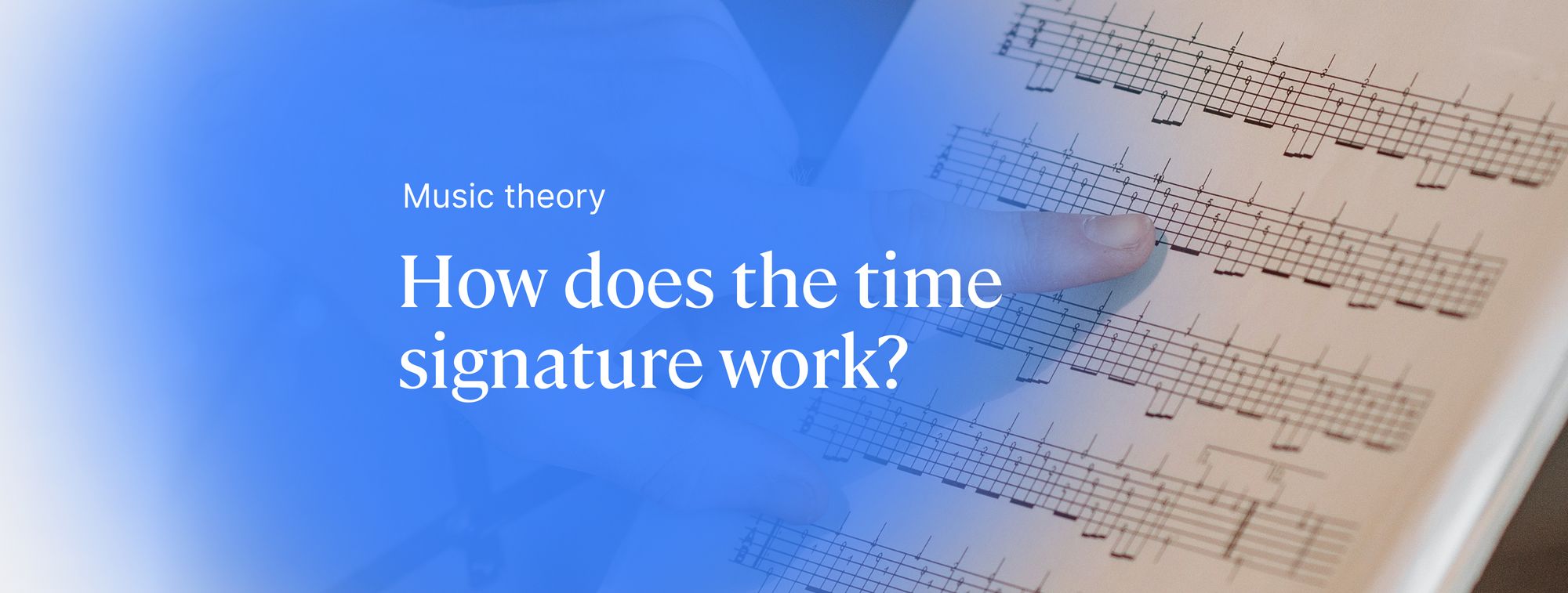In our previous article, we explored the concept of rhythm, a crucial foundation for the subject we're looking at today: the time signature. The time signature guides us on how to navigate the rhythm in a piece. It's placed right at the beginning of the sheet music, beside the clef.

In simple terms, it's written as a fraction, a top number over a bottom number. The top number tells us how many beats are in a measure – essentially, the rhythm structure of the music. The bottom number indicates the type of note that gets one beat.

What is the time signature?
Before we delve further into this, let's discuss the concept of the measure. A measure, also called a bar, is the basic unit of music consisting of time intervals that are grouped together. In simpler terms, it's the framework within which we organize our musical ideas. You can envision bars as blocks into which you divide your song.
💡 If you want a refresher on what a measure is in music, take a look at our dedicated article:
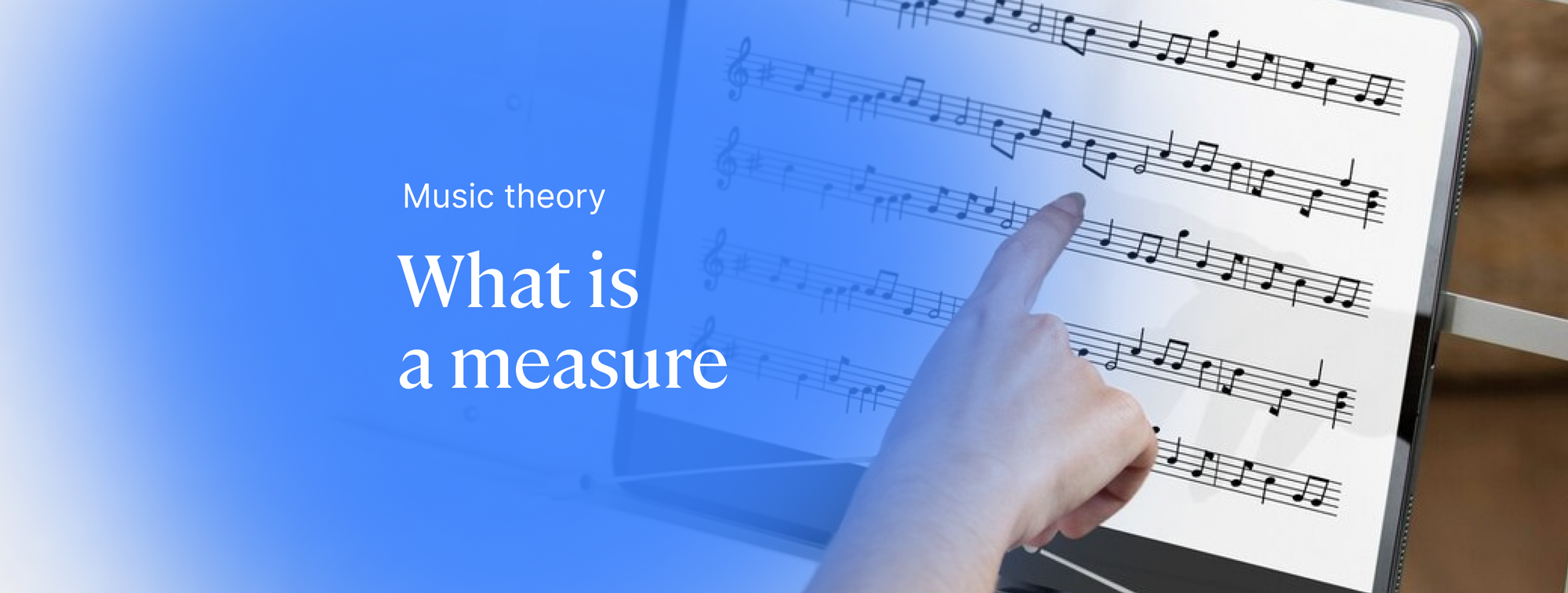
In a similar vein, measures can be compared to the sentences within a paragraph. The time signature gives important information about the number of words in each sentence and their duration, specifying how many beats are in the measures and how long each beat lasts.
Got it? Ok, let's get hands-on!
What do the numbers in the time signature mean?
The relationship between tempo, BPM and the time signature
The time signature serves as a notation indicating how beats are subdivided in a musical composition. Remember, beats are the units used to measure time, typically expressed as beats per minute (BPM), determining the tempo.
⏱️ Tempo is notated as a combination of a musical rhythmic note and a numerical value, such as ♩=60, representing 60 beats per minute.
Remember that rhythmic notes are proportional. That means each has a value proportional to another (e.g., one whole equals two halves or four fourths). To know the duration in terms of time, you have to check the tempo. If the unit of measure is a quarter in a song – because the time signature is 4/4 – and the BPM=60, each quarter will last 1 second. If the time signature is 4/4 and the BPM=120, the quarter will last 0.5 seconds and so on.
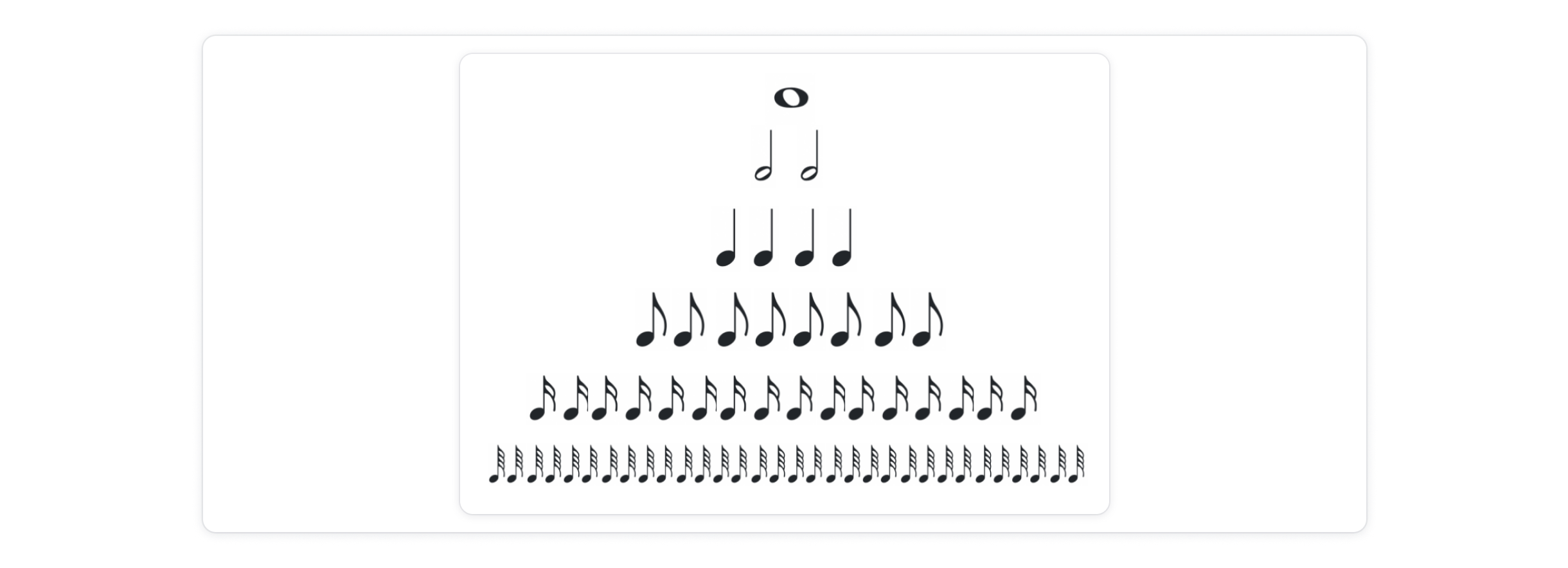
The numbers in the time signature
As mentioned above, the time signature is shown as a fraction, with one number placed over another. This fractional representation gives the information about both the quantity and duration of beats within each measure, offering a systematic guide to understanding the rhythmic structure of the music.

The bottom number in the time signature indicates the value of the beat in each bar concerning rhythmic figures. Considering the proportion between rhythmic notes, 1/4 represents a quarter note (as it is a quarter of a whole). Consequently, if you come across a 4/4 time signature, it implies that the beat's unit is a quarter note. This principle applies to all other rhythmic figures; for instance, a 4/8 time signature means the beat unit is an eighth note.
On the other hand, the top number communicates how many of these rhythmic notes are present in each bar. For a 4/4 time signature, there are four quarters in each bar. If it reads 2/4, there are two quarters in each bar, and for 12/8, there are twelve eighth notes in each bar.
You can think of it this way:
4/4 = I need four 1/4 (quarter) notes per bar.
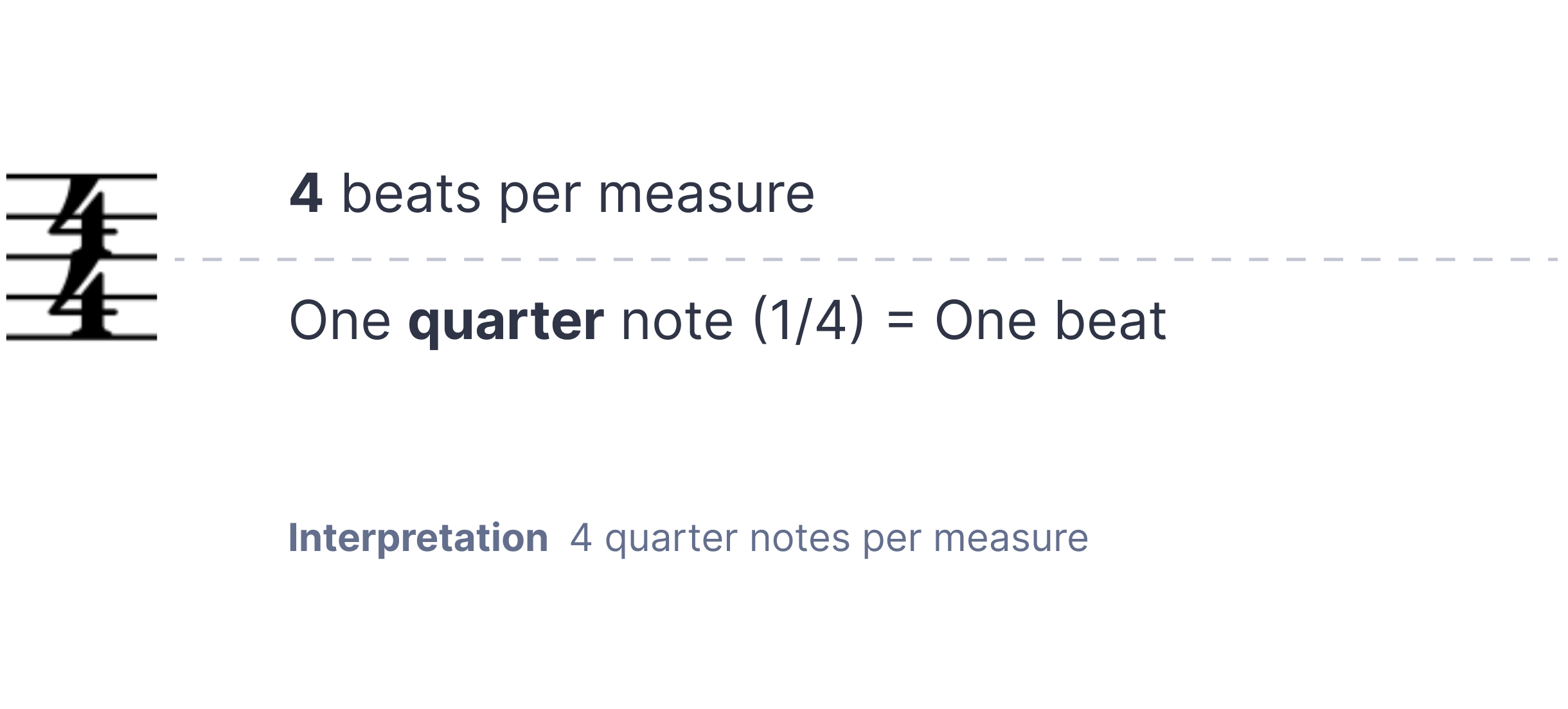
3/4= I need three 1/4(quarter) notes per bar.
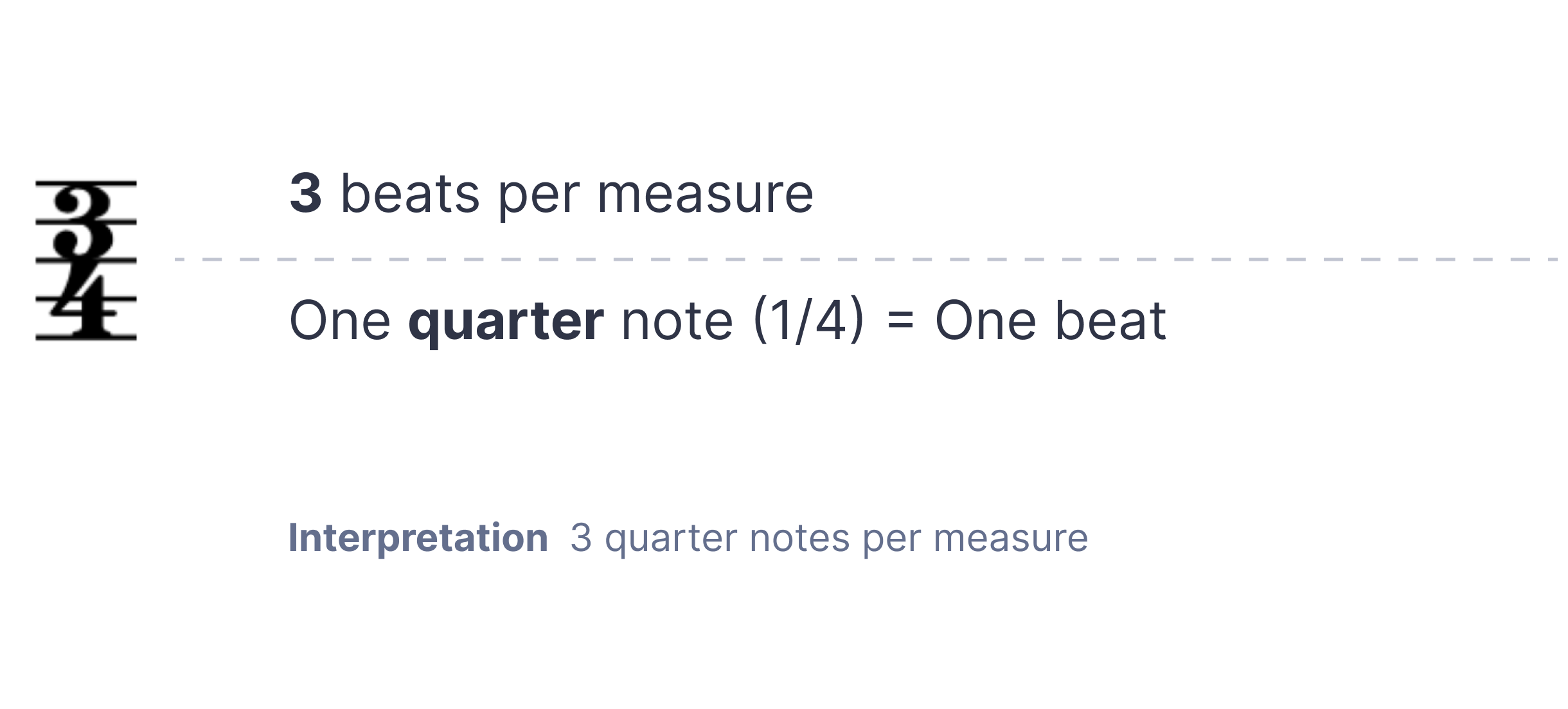
12/8= I need twelve 1/8 (eighth) notes per bar.
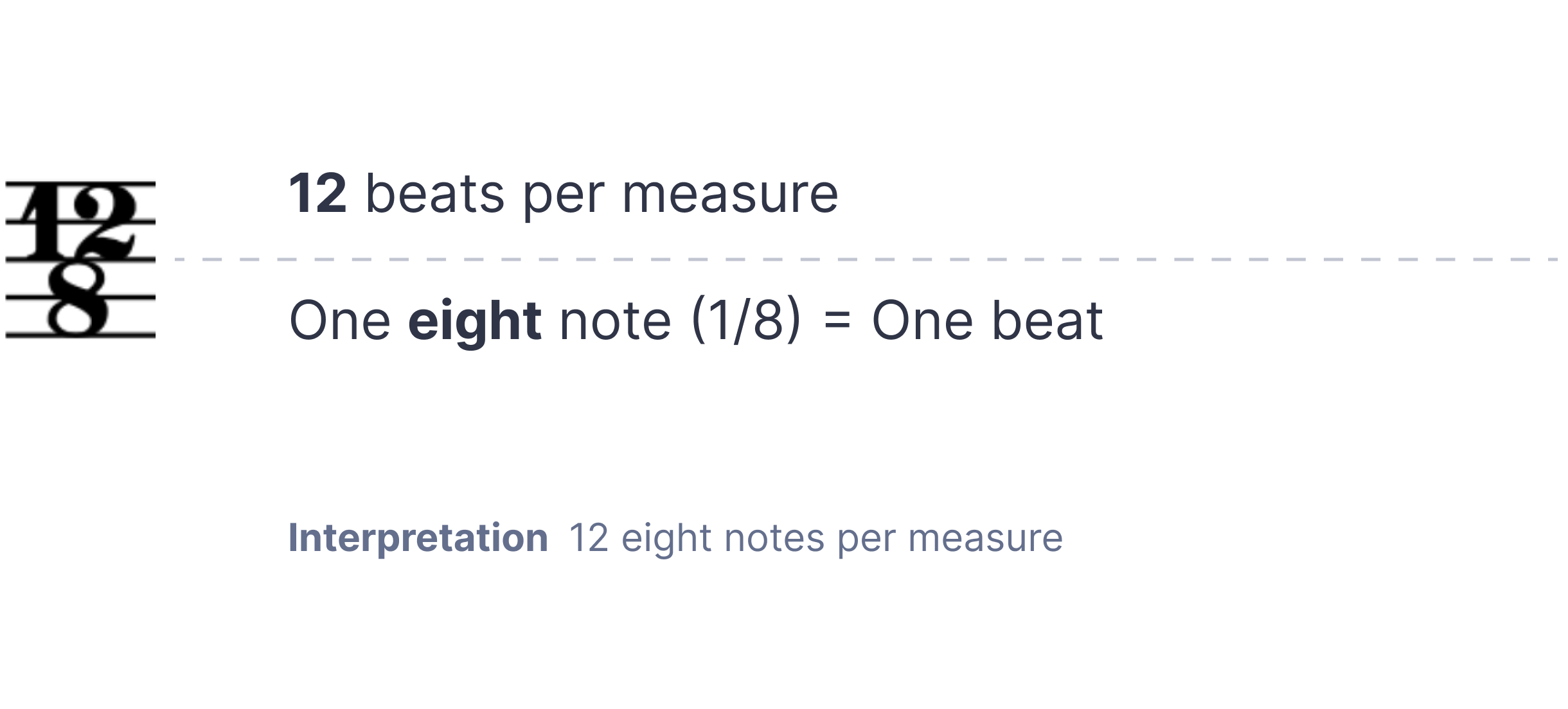
💡 The upper number indicates how many beats there are in each measure, while the lower number shows the kind of note that gets one beat.
The most used time signature nowadays
The most commonly used time signature in today's music is 4/4, present in genres like salsa, hip-hop, funk, electronic, and pop. However, beyond this widespread choice, numerous other time signatures exist, each contributing distinct characteristics to the music we create.
Let's listen to some amazing songs in different time signatures!
This is 4/4:
This is 3/4:
This is 7/4:
How many different time signatures are there?
To break it down, there are two kinds of time signatures: regular and irregular.
♣︎ Regular Time Signatures
Regular time signatures come in two types: simple and compound.
In simple time signatures, the top number can be divided evenly by 2, 3, or 4. Conversely, when you see an "8" as the bottom number, it's a sign of a compound time signature, where the beat is split into three sub-beats.
In the image below you can see how the beat is divided in simple and compound time signatures.

Both simple and compound time signatures exhibit symmetry within each measure, as shown in the image below.
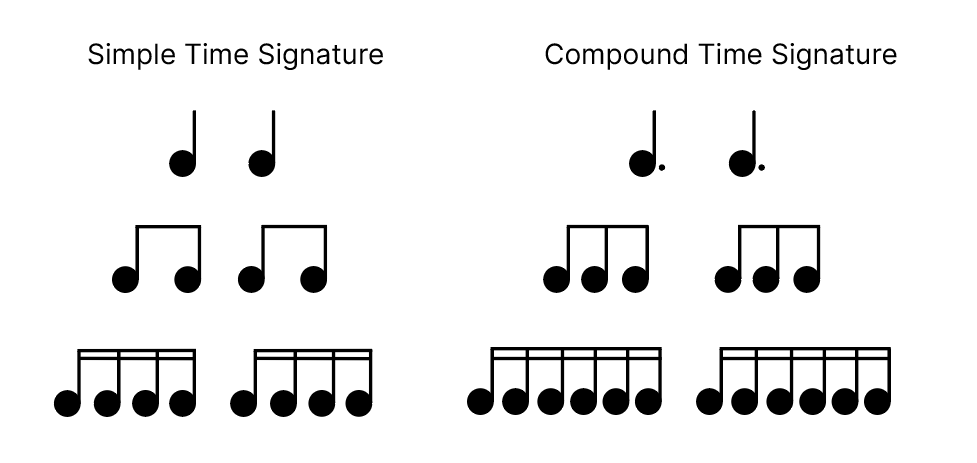
♣︎ Irregular Time Signatures
Unlike regular time signatures, irregular time signatures lack symmetry.
For a more in-depth exploration of the various types of time signatures, be sure to read our dedicated article:


Final thoughts
You've likely noticed that for many concepts of music theory, the key is understanding proportions – especially when it comes to rhythm. Don't worry about memorizing everything, you just want to grasp the basic rules. As you get the hang of proportions, you'll find these rules make intuitive sense even in complex situations.
That's enough info for now, I think. If needed, do go back through this article, taking notes and letting everything sink in.
And don't forget to put things into practice in your music notation software!
See you soon,
